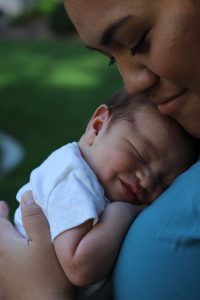
BYU students who find themselves approaching the age of 26 or preparing to graduate often begin to question which health provider is best for them. Most students are currently enrolled under the health insurance their parents provide or Deseret Mutual Benefit Administrators, the university’s student health plan.
Some students, like Miyamoto Jensen, are preparing themselves financially for graduation this coming April. Jensen said she hopes to find employment with a good health insurance provider that will benefit herself and her family upon graduating .
Jensen is 23 and a senior studying family history from Laie, Hawaii. She was married last year and had a baby boy this August. She said before coming to BYU, she didn’t have health insurance.
“My parents told me to apply for Obamacare, but Deseret Mutual was a lot more affordable for me,” Jensen said. “I honestly don’t know a lot about Obamacare, but the student health center is better; it’s closer and the benefits are a lot easier around here.”
Jensen gave birth to her son two months ago in Utah Valley Hospital. Her insurance covered almost all of the costs except the C-section procedure she had to undergo.
“Now I’m just trying to stay out of debt and pay back the hospital for the surgery,” Jensen said. “Having a baby can be really expensive.”
Shortly after her son was born, Jensen put him under her insurance. She said her family back in Hawaii are all covered under a health plan.
Jensen said now that she is married and has a child, this is helping her prepare for paying for health insurance as a non-student.
“I’m going to have to get used to the monthly payment method, as opposed to just paying once a semester,” Jensen said.
Since the Affordable Care Act went into effect in 2013, the nation has seen a decrease in the percentage of uninsured Americans by nearly 10 million. The number of citizens that were uninsured in 2013 was about 42 million, according to the U.S. Census Bureau. Last year, the percentage was at 29 million.
Despite students’ efforts to find employment with health benefits, some consider Medicare and Obamacare as an option. Students like Eric Townsend, who needs health care benefits due to a chronic illness, look to avoid expensive premium costs.
Townsend is a graduate mechanical engineering student and plans to finish his degree in April.
At the age of 20, he was diagnosed with Type 1 diabetes while he was serving a missionary in Mexico. He is currently under his parents’ insurance plan, but will approach his 26th birthday shortly after graduation.

“I go to the doctor’s every three months and have had to pay for things in the past,” Townsend said. “If I qualify for Medicaid, I’ll apply for it.”
Although a new Republican president was recently elected, Townsend said he could possibly benefit greatly from the Affordable Care Act.
Several states have decided to expand Medicare using Obamacare, but the state of Utah hasn’t embraced the program just yet. Utah is one of the states with the lowest change in percentage drop of insured citizens since Obamacare was passed, according to a Gallup poll.
Utah is among the states that have seen slight drops in uninsured percentage. Since 2013, the uninsured rate has fallen to 12.4 percent with the nation’s rate at 11.7 percent. Overall, Utah is considered average when comparing the uninsured rates nationally, but could be better off if it chose to embrace Obamacare.
In 2013 and 2014, some states like Arkansas, Kentucky and Oregon saw improvement in uninsured rates by 7.7 percent or more, while others, like Utah, only saw 2.3 percent or less.
Utah is considered one of the states with the lowest premium payments. Eighty-six percent of Utah exchange enrollees qualified for premium subsidies, according to HealthInsurance.org.
“Their average pre-subsidy premium is just $271/month, which is by far the lowest of the 38 states that use Healthcare.gov (the second-lowest is Arizona, at $324/month),” the website states.
Utah has some of the best health care packages and the cheapest deals. The question is whether Obamacare would help those with Medicaid and if Utah would ever follow the several other states to adopt its policies. For some BYU students who may leave the state after graduation, it is an option.





